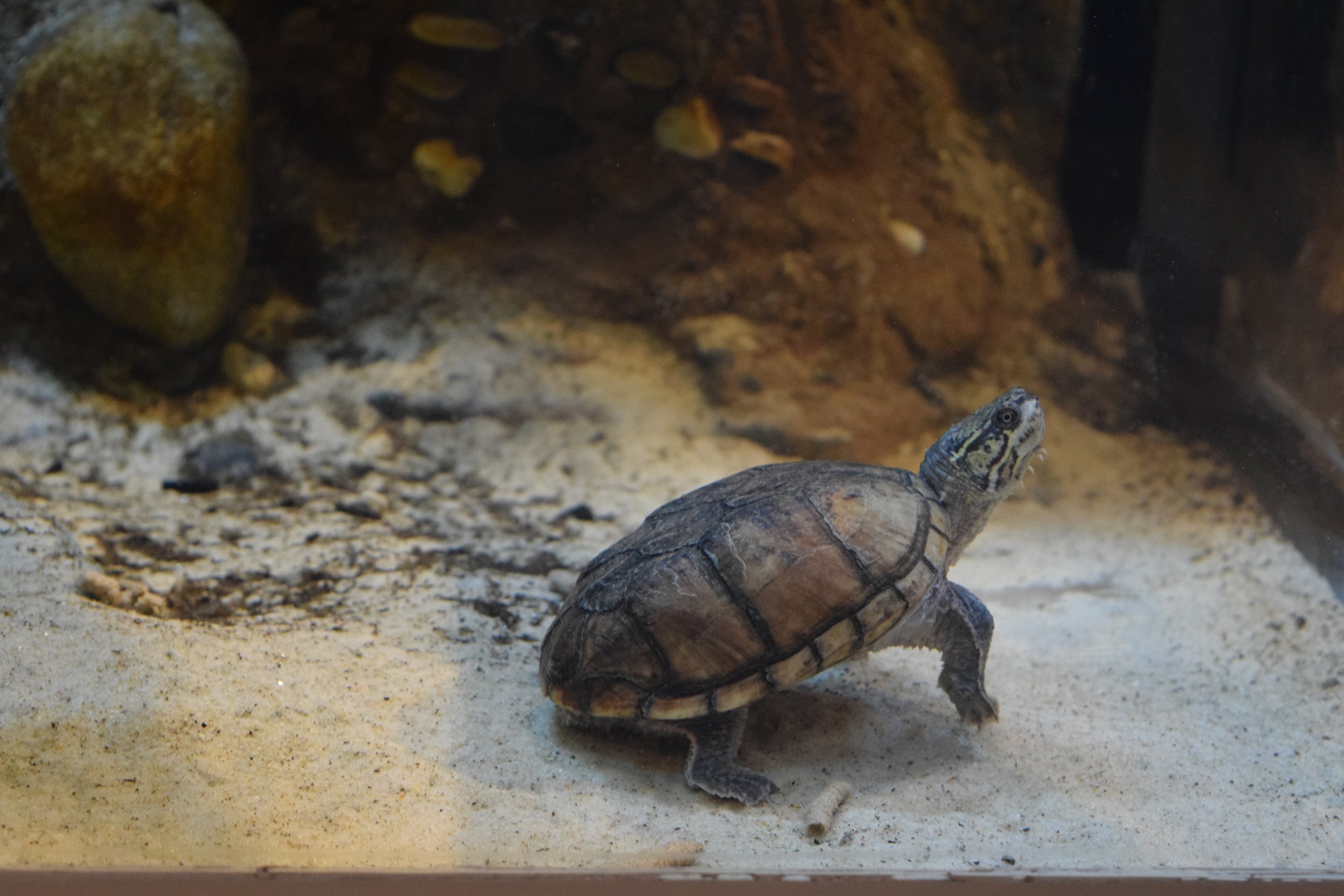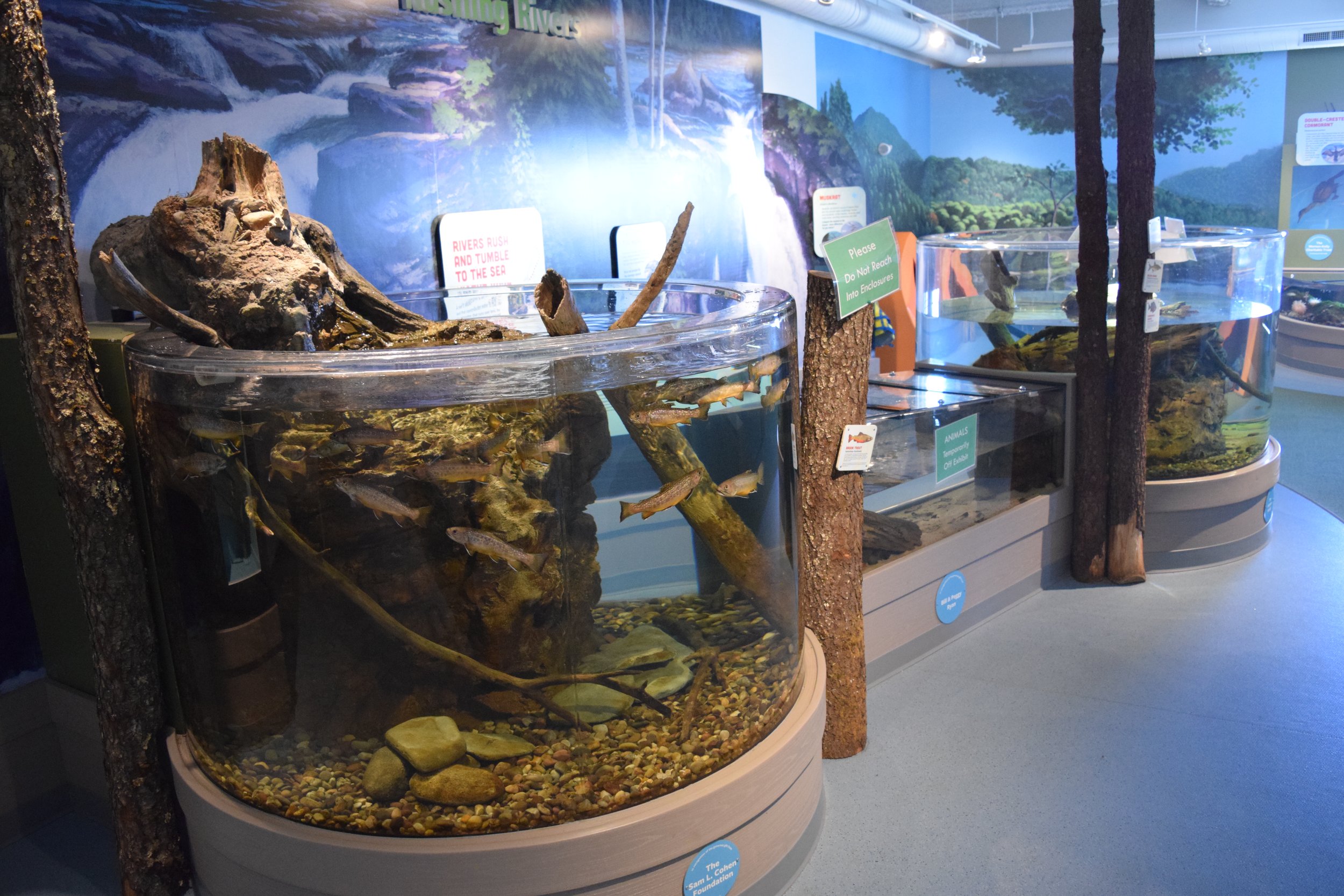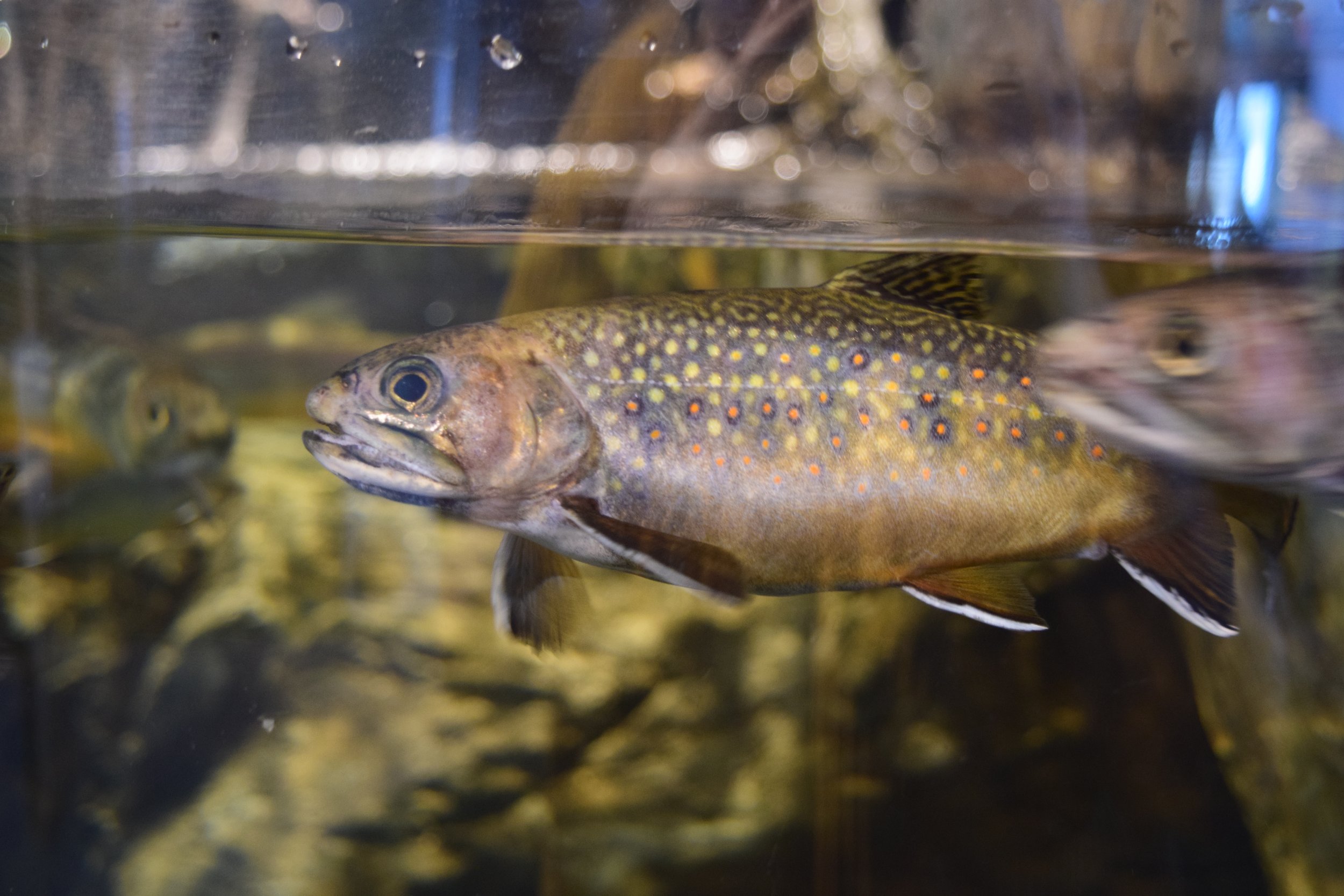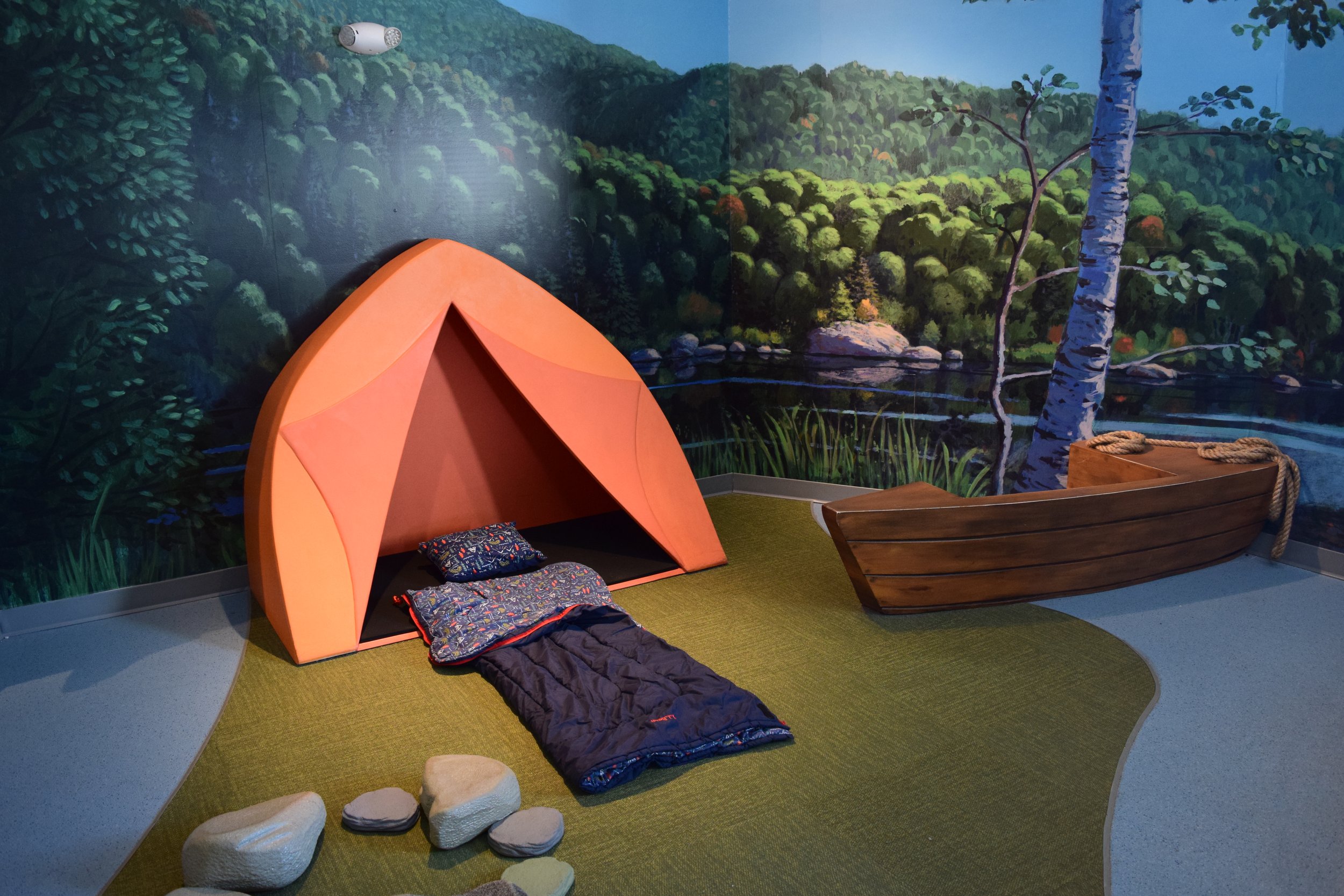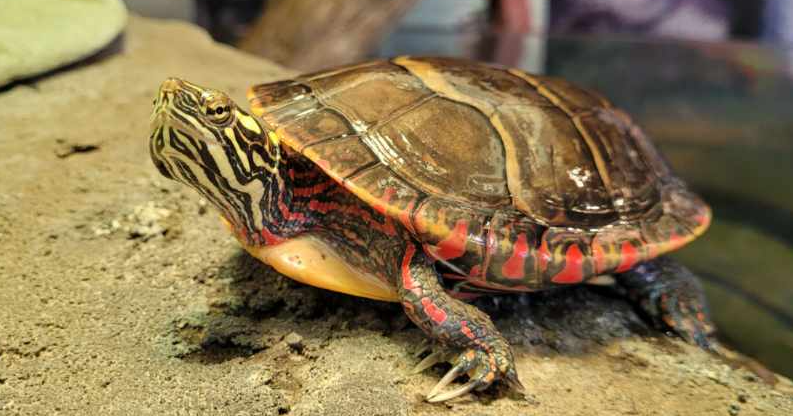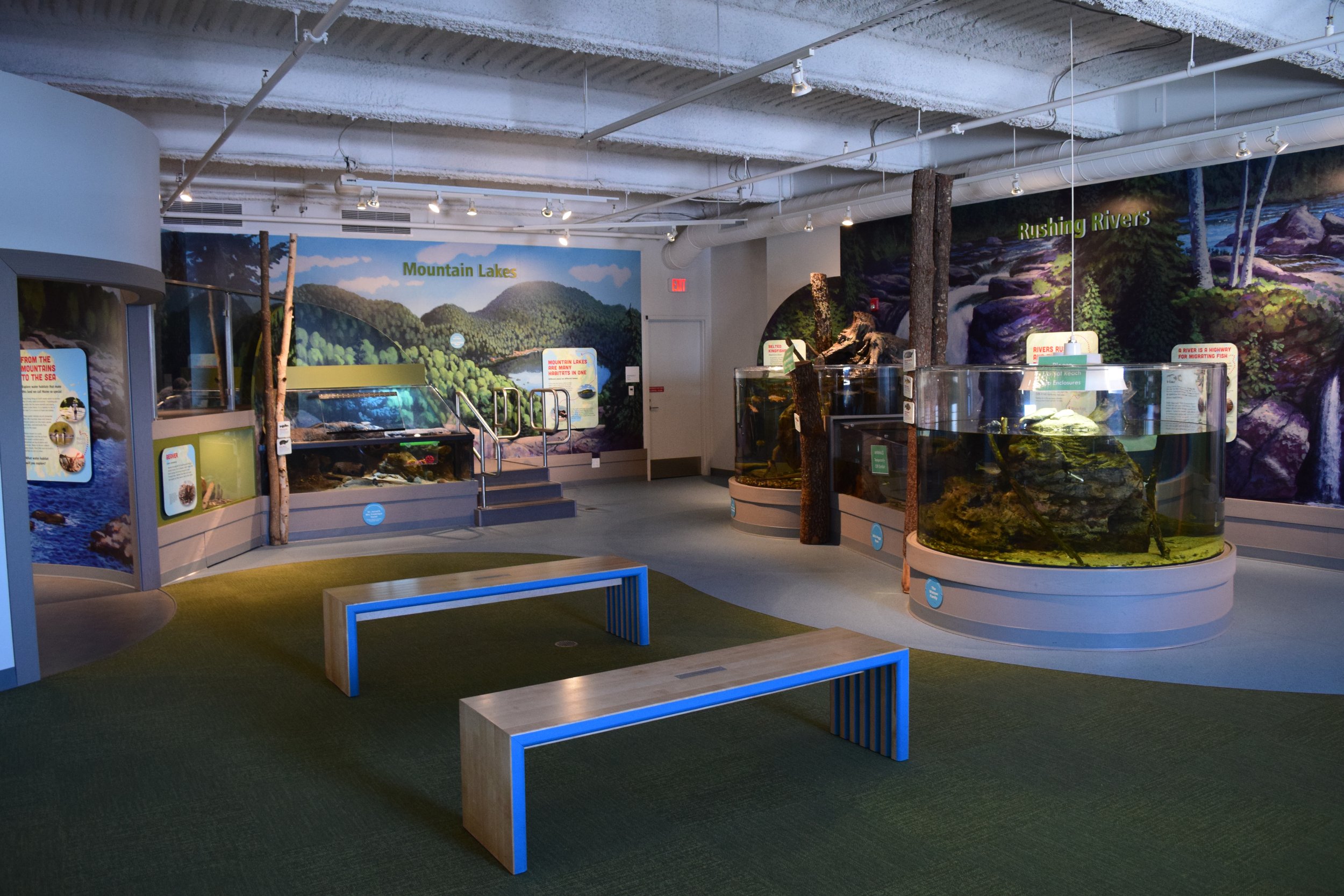Exhibit Feature Friday: From the Mountains to the Sea: Freshwater
Exhibit Feature Friday
At the Children’s Museum & Theatre of Maine (CMTM), we use the word exhibit to describe the interactive experiences, spaces, and displays spread across three floors and immediately outside the facility at 250 Thompson’s Point Road. CMTM is home to over 15 exhibits, each designed to encourage experiential learning through open-ended play.
Our team at CMTM decided to give each exhibit the spotlight it deserves and is dedicating Fridays to highlighting a new exhibit, diving a little deeper into the WHY and HOW behind each playful space and experience.
EXHIBIT: From the Mountains to the Sea: Freshwater
LOCATION: 3rd Floor
From the Mountains to the Sea, made possible by a generous gift from Poland Spring, is home to freshwater and marine animals. This Exhibit Feature Friday will focus on the freshwater tanks. Check back next week for part two: From the Mountains to the Sea: Saltwater!
From the Mountains to the Sea: Freshwater
From the Mountains to the Sea is an aquarium, science exhibit, and play space centered around Maine’s watersheds.
Seven tanks housing live aquatic animals are the main feature of this exhibit. All species in From the Mountains to the Sea are native to Maine and serve as ambassadors for their respective ecosystems. The gallery is adorned with murals of Maine by author and illustrator Kevin Hawkes. Hawke’s sweeping landscapes transport visitors into the Maine wilderness, while a child-sized campsite and rowboat encourage imaginative play with an outdoor theme.
Gallery Murals generously donated by Timothy and Elizabeth Williams in honor of Jean Gannett Hawley.
What is a Watershed?
Water moves in a constant cycle. It evaporates into the air, then condenses in the atmosphere before falling back to the earth’s surface as rain or snow. A watershed is a land area where that rain or snow is channeled from high elevations like mountains down to creeks, rivers, and, ultimately, the sea.
Design and Tanks
“ The five freshwater aquariums here at the museum represent 5 different aquatic habitats along the watershed’s journey to the ocean; Alpine Lakes, Creeks, Rivers, Bogs, and Lowland Ponds. Freshwater accounts for only 3% of all the water on earth, with 2.5% of that being trapped in glaciers, groundwater, or the atmosphere. The remaining 0.5% is home to more than half of the world’s fish species! Currently, there are six species of freshwater fish at the museum, as well as two freshwater turtles with plans to add more over time. ”
The From the Mountains to the Sea exhibit was designed to move visitors through the many ecosystems in a Maine watershed.
LAKE An elevated platform allows guests to climb the mountains and come face-to-face with a school of northern redbelly dace. These residents of the mountain Lake Tank (made possible by a generous gift from Melissa Smith and Brian Corcoran) are small schooling fish who flit about their enclosure in groups. Keen-eyed visitors may also spy another type of fish, the nine-spined sticklebacks hiding in the shadows. Sticklebacks are a group of small fishes found throughout the northern hemisphere in both freshwater and marine habitats. Despite their tiny size and shy nature, sticklebacks are micro-predators who hunt down baby fish and aquatic invertebrates. The sticklebacks at the museum are fed frozen bloodworms and live water fleas as a treat.
As guests move down from the mountains, they’ll find a series of tanks modeling several freshwater ecosystems.
Morty the musk turtle, a resident of the Creek Tank.
CREEK At the base of the mountains, visitors find the Creek Tank (made possible by a generous gift from Dr. Jarrod and Mrs. Frederique Daniel, and Hugo, Delphine, Capucine, and Emmeline Daniel), which houses a small, charismatic brown bullhead catfish. This fish is currently only two inches long, but it will one day grow over a foot in length! The Creek Tank is also home to Morty the Musk Turtle. Morty is among the most beloved creatures in the From the Mountains to the Sea exhibit. Guests delight in finding her resting amongst the tank’s gnarled tree roots or meandering along its sandy banks. Musk turtles are Maine's smallest native turtle. They are very secretive in nature, rarely leaving the safety of the water, and being more active around dawn and dusk to avoid predators. Morty was rescued by Center for Wildlife in Cape Neddick and came to live at CMTM after she was deemed non-releasable.
A series of large tanks sit adjacent to the creek, representing River, Bog, and Pond ecosystems.
RIVER In the River Tank (made possible by a generous gift from The Sam L. Cohen Foundation), brook trout dart and splash through the rapids. The large, circular tank allows guests to appreciate the gorgeous patterns on their bodies. Brook trout prefer water that is clear and well-oxygenated, making this species an excellent indicator of water quality.
BOG The Bog Tank (made possible by a generous gift from Bill and Peggy Ryan) teaches visitors about the importance of bogs. These habitats absorb a significant amount of precipitation, preventing floods while providing homes for many plants and animals.
POND The final freshwater tank is the Pond Tank (made possible by a generous gift from The Watson Family), where visitors will find Henry the eastern painted turtle. Henry is often seen sunning under his heat lamp or showing off his bright red and yellow markings as he swims through the water. His tank mates include glittering pumpkinseed sunfish and fast-moving golden shiner fish. Pumpkinseed are common in ponds, lakes, and slower rivers of Maine, and often live around human made habitats such as boat ramps and docks. Because of this they are often the first fish species many Mainers meet! Pumpkinseed males dig round, bowl shaped nests and defend their eggs and young until they are old enough to fend for themselves.
Immersive Learning
CMTM hosts daily programs in the From the Mountains to the Sea exhibit. These programs are designed to encourage curiosity toward science and nature while deepening engagement with the exhibit. Visitors may experience scavenger hunts, art activities, animal encounters, or educator-led interactive activities with themes like animal adaptations, comparative anatomy, and scientific data collection.
For information on upcoming specialty programs, check out the CMTM Events and Programs Calendar.
Afterschool Programming
From the Mountains to the Sea is also the location for aquarium-focused afterschool program: Watershed Friends. CMTM Afterschool Experiences, designed for children ages 5 - 12, allow for deeper explorations of STEM topics centered around specific themes. Participants learn about ecosystems, connect with animal ambassadors, play games, and create projects while studying the importance of watersheds. Learn more about upcoming aquarium programs on the Afterschool Experiences Page.
From the Mountains to the Sea was made possible by a generous gift from Poland Spring.
Gallery Murals were made possible by a generous gift from Timothy and Elizabeth Williams in honor of Jean Gannett Hawley.
Lake Tank was made possible by a generous gift from Melissa Smith and Brian Corcoran.
River Tank was made possible by a generous gift from The Sam L. Cohen Foundation.
Pond Tank was made possible by a generous gift from The Watson Family.
Bog Tank was made possible by a generous gift from Bill and Peggy Ryan.
Creek Tank was made possible by a generous gift from Dr. Jarrod and Mrs. Frederique Daniel and Hugo, Delphine, Capucine, and Emmeline Daniel.
Accessibility Features were made possible by a generous gift from Unum.
Learn more about the From the Mountains to the Sea exhibit here: https://www.kitetails.org/exhibit-from-mountains-to-the-sea
Coming up next:
Tune in next Friday for part two: From the Mountains to the Sea: Saltwater!

